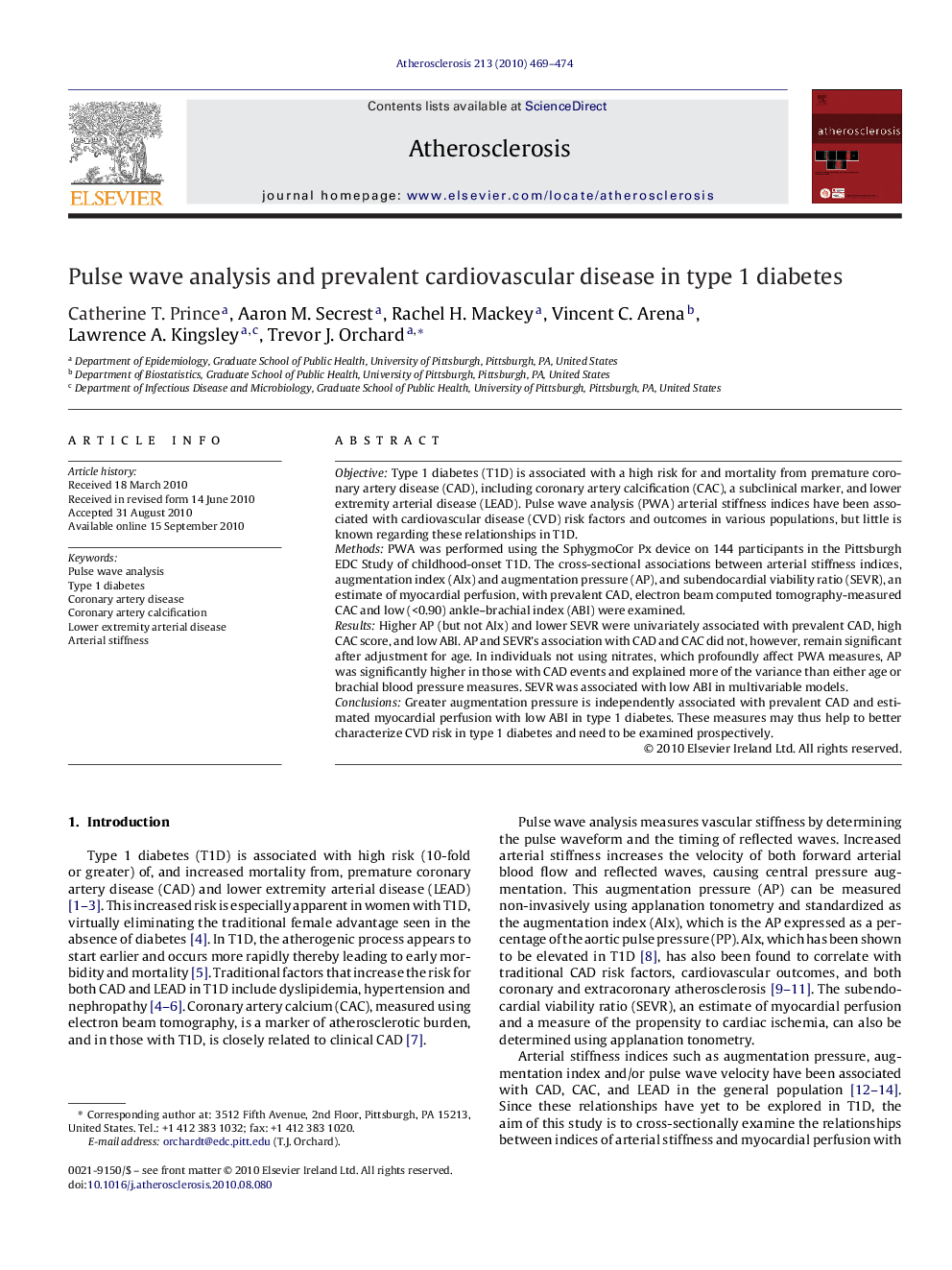| Article ID | Journal | Published Year | Pages | File Type |
|---|---|---|---|---|
| 2892942 | Atherosclerosis | 2010 | 6 Pages |
ObjectiveType 1 diabetes (T1D) is associated with a high risk for and mortality from premature coronary artery disease (CAD), including coronary artery calcification (CAC), a subclinical marker, and lower extremity arterial disease (LEAD). Pulse wave analysis (PWA) arterial stiffness indices have been associated with cardiovascular disease (CVD) risk factors and outcomes in various populations, but little is known regarding these relationships in T1D.MethodsPWA was performed using the SphygmoCor Px device on 144 participants in the Pittsburgh EDC Study of childhood-onset T1D. The cross-sectional associations between arterial stiffness indices, augmentation index (AIx) and augmentation pressure (AP), and subendocardial viability ratio (SEVR), an estimate of myocardial perfusion, with prevalent CAD, electron beam computed tomography-measured CAC and low (<0.90) ankle–brachial index (ABI) were examined.ResultsHigher AP (but not AIx) and lower SEVR were univariately associated with prevalent CAD, high CAC score, and low ABI. AP and SEVR's association with CAD and CAC did not, however, remain significant after adjustment for age. In individuals not using nitrates, which profoundly affect PWA measures, AP was significantly higher in those with CAD events and explained more of the variance than either age or brachial blood pressure measures. SEVR was associated with low ABI in multivariable models.ConclusionsGreater augmentation pressure is independently associated with prevalent CAD and estimated myocardial perfusion with low ABI in type 1 diabetes. These measures may thus help to better characterize CVD risk in type 1 diabetes and need to be examined prospectively.
